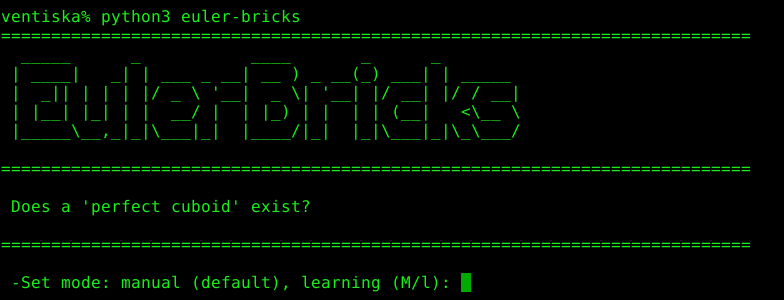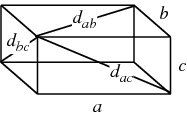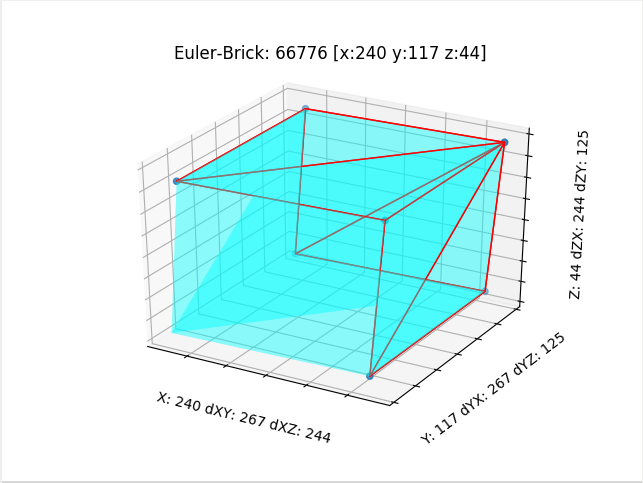An unsolved problem in mathematics... https://03c8.net
|
|
6 年之前 | |
|---|---|---|
| euler-bricks | 6 年之前 | |
| .gitattributes | 6 年之前 | |
| .gitignore | 6 年之前 | |
| .pylintrc | 6 年之前 | |
| README.md | 6 年之前 |
README.md
Info:
Problem: http://en.wikipedia.org/wiki/Euler_brick
A "brick" is a cuboid where the length of all the edges are integers and all of the diagonals of the faces are integers as well. All sides must also be different.
Euler-Bricks tries to calculate (brute-force) as many different "bricks" where the sides are less than X.
To calculate a "brick" means to find the lengths of the edges and the lengths of the diagonals of the faces of a valid Euler's "brick".
You can visualize plotting graphs with results, store math 'bricks' relationships (so the tool doesn't need to process again similar data) and organized auto-save your results, for example, to be used on a future for BigData processing or AI maths solving tasks.
Installing:
This tool runs on many platforms and it requires Python (3.x.y). To generate graphs, you need to install the following library:
python3-matplotlib - Python based plotting system in a style similar to Matlab (Python 3)
On Debian-based systems (ex: Ubuntu), run:
sudo apt-get install python3-matplotlib
Or:
pip3 install matplotlib
Executing:
python3 euler-bricks
Source libs:
- PyMatplotlib: https://pypi.python.org/pypi/matplotlib
License:
Euler-Bricks is released under the GPLv3.
Contact:
- psy (epsylon@riseup.net)
Contribute:
To make donations use the following hash:
- Bitcoin: 19aXfJtoYJUoXEZtjNwsah2JKN9CK5Pcjw



